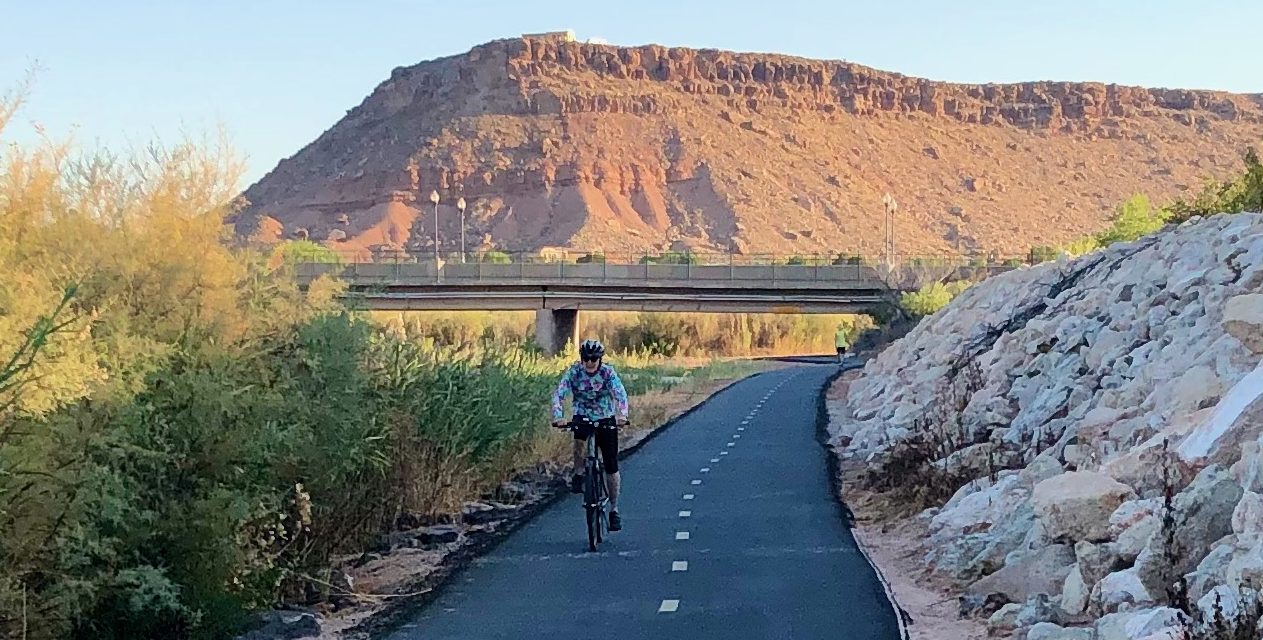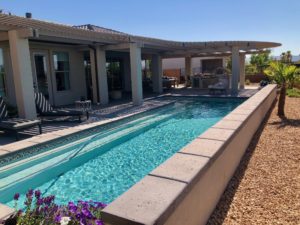When you think of the top places to retire in the United States, the usual response is somewhere with palm trees and a nice beach, like Florida or South Carolina. Or maybe the dry Arizona desert. On more and more “best places to retire” lists, however, is a relative newcomer to the retirement scene: Utah.
Utah’s popularity as a place to retire is growing. Several publications that rank states now list Utah as one of the top 10 best states for retirees. WalletHub, in its 2020 annual study, ranked Utah as the fourth-best state to retire. The survey ranked states based on affordability, health-related factors, and overall quality of life. A similar study by Bankrate in 2018 put Utah as the No. 2 top state in the nation for retirement.
A Kiplinger survey last year ranked Utah No. 10 among the 50 states, citing the following advantages:
“The Beehive State is a sweet spot for active retirees. Utah ranks second in the U.S. for the overall health of its 65-plus population, according to the United Health Foundation, and offers plenty of outdoor recreation options that are sure to keep you buzzing through retirement.”
From these and other studies, it’s clear that Utah is now on the map as a place worth checking out for would-be retirees.
What Makes Utah Appealing for Senior Adults
Located in the West, Utah is best known as home of the Church of Jesus Christ of Latter-Day Saints (the Mormons) and for hosting the 2002 Winter Olympics. It is a popular winter ski destination and home to five national parks. The most popular of the five, Zion National Park, was the fourth most-visited national park in the nation last year, ahead of Yellowstone and Yosemite, according to the National Parks Service. An estimated 4.5 million guests visited Zion.
For retirees, Utah’s appeal includes its dramatic scenery, from the otherworldly red-rock formations in the southern half of the state to the green-and-majestic mountains and sparkling clear lakes in the northern half. It’s a true paradise for those who enjoy an active outdoor life, including hiking, snow skiing, mountain biking, fishing, and boating. Beyond curb appeal, Utah has a diversified economy, good healthcare, vibrant urban centers, and quaint small towns. Its people are known as healthy and reourceful, with lower-than-average obesity levels and a much-better-than average life expectancy. Utah’s crime rate is also below the national average.
Utah’s “secret” is getting out. During the past decade, the Beehive State was the fastest-growing state in the nation on a percentage basis. Clearly, there’s a lot to like in Utah for aspiring retirees looking for a new place to call home.
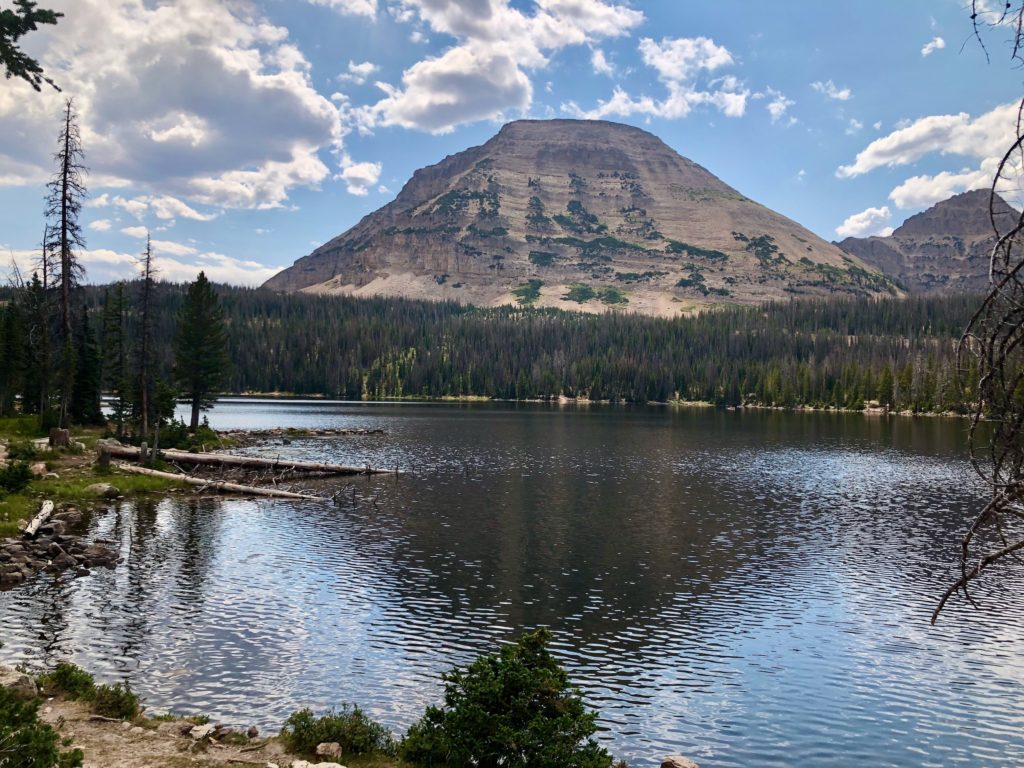
Lakes and mountains add to Utah’s active outdoor lifestyle.
Utah’s Drawbacks
Utah’s two main negatives for retirees are the climate and the unfriendly tax structure. Summer daytime high temperatures are typically in the 90s and often exceed 100 degrees in much of the state. Winters in the northern half of Utah can be long and harsh, with considerable snowfall and frequent air inversions that cause air pollution. The extreme southern section of Utah, however, escapes the harsh winter weather and has a look and feel more like retirement areas in Arizona, which is immediately to the south of Utah. We will discuss this region of the state later in this story.
While not the worst in the nation, Utah’s tax structure is not particularly friendly toward retirees. Utah is one of only 13 states that tax Social Security benefits. It also taxes retirement plan withdrawals and pensions. Some of its other taxes are less onerous. Property taxes are lower than average. Even so, Kiplinger ranks Utah as one of the top 10 least tax-friendly states for retirees.
Factors in Choosing Where to Retire in Utah
Utah is a large state, but much of Utah features rugged mountain scenery and a plethora of outdoor activities, making it a hard choice for retirees to pick just the right spot. There are, however, significant climate and topographical differences between the southern and northern halves. Southern Utah, anchored by the St. George/Washington County area, offers a warmer, drier climate than Northern Utah, including the Greater Salt Lake City area. Popular ski resort towns such as Park City are located in the northern half of the state. If you are a fan of winter skiing and snowboarding, that is where you will want to go.
Where retirees choose to settle in Utah also depends on whether they want a more urban environment or not. For a truly urban experience, there is really only one choice in Utah and that is the Greater Salt Lake City area. The Salt Lake City-Provo-Orem, Utah Combined Statistical Area, covering a distance of 120 miles along the Wasatch front, has a population of 2.6 million, more than 80 percent of the state’s total population. No other city in Utah outside of this Greater Salt Lake statistical area has a population of even 200,000.
Utah’s Retirement Mecca: St. George and Washington County
Nowhere in Utah caters more to retirees than the Greater St. George/Washington County area, located in the extreme southwest corner of Utah, bordering Arizona and Nevada. In cities such as St. George, Ivins, Washington, and Hurricane, you will find clusters of attractive retirement communities that resemble those found further south in Arizona. This is the warmest area of the state, where snow is rare and palm trees thrive. It is also an area of stunning natural beauty, just minutes from Zion National Park. Washington County is lined with golf courses and criss-crossed with hiking and biking trails.
The outdoor lifestyle and low humidity of the St. George area appeals to active retirees, including those from other parts of Utah.
“It’s the warm-weather destination in Utah. A lot of people within Utah who want to seek warmer weather in the winter will come to St. George,” said Dan Mooy, sales manager for Brio, an award-winning master planned community in Washington, Utah.
Brio features resort-style living, with an emphasis on the outdoors. Brio’s social life centers around its $4 million clubhouse that includes a large fitness center, an indoor pool, and social rooms. Brio also has a large outdoor swimming pool, pickleball and tennis courts, and miles of hiking and biking trails. You can ride your golf cart to an adjacent public golf course. Last year, Where to Retire named Brio one of the 50 best master planned communities in the nation, and the only Utah community on the list.
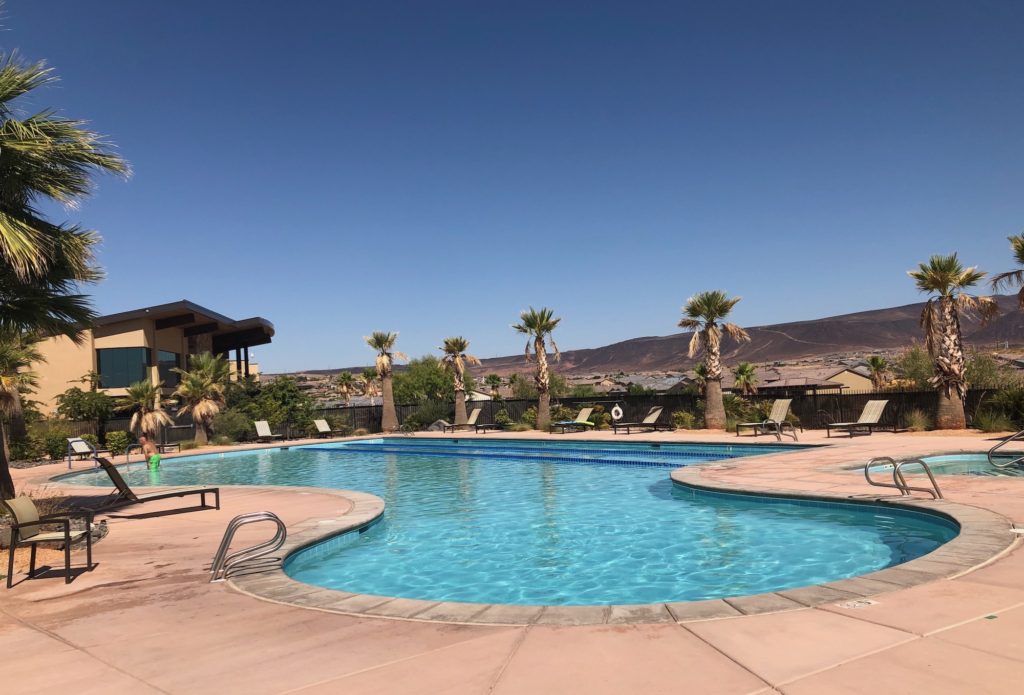
Brio will eventually include 600 homes and is currently about two-thirds finished. Prices start at $290,000 for a three-bedroom new home, with the average price in the $400,000 to $500,000 range. With all the upgrades and a backyard inground pool, some homes in Brio top out in excess of $700,000.
“It (Brio) has a great mix of amenities. It’s convenient to shopping, it’s scenic. It checks all of the boxes for a lot of people,” Mooy said.
- Luxurious homes await retirees in communities like Brio.
- Outdoor living can be enjoyed year-round.
Unlike Florida and Arizona, where most new retirees come from out of state, in the St. George area of Southern Utah the greatest number of retirees and snowbirds come from within the state, many from the Greater Salt Lake City area.
“St. George is a 3 1/2 hour drive from Salt Lake City,” Mooy noted. “A lot of people can say, ‘Hey, let’s retire to St. George. Our family may be from up North (in Utah), but we can leave after breakfast and be with our family up North for lunch.'”
In communities like Brio, about half the residents are snowbirds, seasonal residents who come down south to escape harsher winter weather in Northern Utah or elsewhere.
Mooy said Brio also attracts a significant number of residents retiring from California and the state of Washington.
Other Popular Retirement Spots in Utah
In terms of being a magnet for large numbers of retirees, nowhere else in Utah comes even close to St. George and Washington County. There are, however, locales and communities elsewhere in Utah that attract retirees. They include Park City, the upscale ski resort town, and Provo, the college town (home to Brigham Young University). Many smaller towns have their own unique appeal, from Brigham City in the north to Cedar City in the south.
Some retirees (or seasonal residents) will be attracted to the more rustic and laid-back resort areas centered around mountains and lakes such as the Ogden Valley/Pineview Reservoir area and Bear Lake Valley. The Wolf Creek Resort near Eden, in the Ogden Valley, is one such mountain resort. Wolf Creek is a 2,800-acre planned community with an 18-hole golf course, hiking and biking trails, and close proximity to three ski resorts. Wolf Creek sells both homes and condos, some with spectacular mountain views.
All of these and many more Utah towns and cities offer a high quality of life and compelling outdoor amenities for retirees.
For those seeking the lifestyle of a larger city, retiring in or around Salt Lake City will make the most sense. Salt Lake City gives you the benefits of excellent healthcare, world-class shopping venues, historic and cultural amenities, and pro sports.
Salt Lake City has its share of 55+ retirement communities, including sections of Daybreak, a huge (4,000 acre) master planned community in South Jordan, a suburb of Salt Lake City. Daybreak’s two 55+ communities are Garden Park Village and Springhouse Village. You will find the usual mixture of swimming pools, walking and biking trails, clubhouses and more, but what makes Daybreak unique is that it also includes retail and office space, allowing you to shop and conduct business without ever leaving the community.
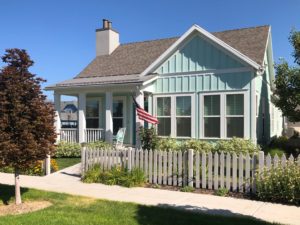
Charming cottage-style homes for retirees in Daybreak.
Explore the Top 55+ Communities in Utah
If you are interested in retiring to Utah, you will find an excellent list of 55+ retirement comunities in Utah on 55Places.com. The largest 55+ community in the state is the SunRiver community in St. George, which when complete will include 2,300 homes.
If you want to retire in the West and enjoy an active outdoors environment amidst mountains and lakes, then Utah is worthy of your consideration.
* * * * *
See These Other Stories About Great Places to Retire:
Lancaster, Pennsylvania: https://thisretirementlife.com/2019/10/29/lancaster-pa-a-special-place-to-visit-or-retire/
Ormond Beach, Florida: https://thisretirementlife.com/2019/09/17/retire-to-ormond-beach/
Costa Rica: https://thisretirementlife.com/2020/02/28/retiring-to-costa-rica/
Got comments? We love to hear from our readers! Please scroll down and add your comments in the section below.
* * * * *
Subscribe via email for free to receive all future stories from This Retirement Life. Our blog explores topics of interest to retirees and those planning for retirement. Please see subscription information to the right of this story or below, and sign up today.

